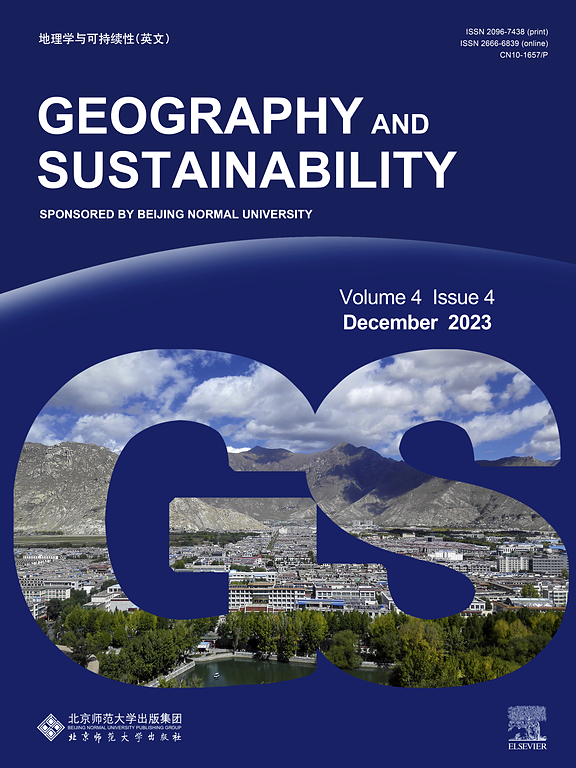Gap dynamics in the U.S. between urban areas in the current trend and in sustainable scenario
IF 8
1区 环境科学与生态学
Q1 GEOGRAPHY, PHYSICAL
引用次数: 0
Abstract
The gap between the projected urban areas in the current trend (UAC) and those in the sustainable scenario (UAS) is a critical factor in understanding whether cities can fulfill the requirements of sustainable development. However, there is a paucity of knowledge on this cutting-edge topic. Given the extensive and rapid urbanization in the United States (U.S.) over the past two centuries, accurately measuring this gap between UAS and UAC is of critical importance for advancing future sustainable urban development, as well as having significant global implications. This study finds that although the 740 U.S. cities have a large UAC in 2100, these cities will encompass a significant gap from UAC to UAS (approximately 165,000 km²), accounting for 30 % UAC at that time. The study also reveals the spatio-temporal heterogeneity of the gap. The gap initially increases before reaching a inflection point in 2090, and it disparates greatly from −100 % to 240 % at city level. While cities in the Northwestern U.S. maintain UAC that exceeds UAS from 2020 to 2100, cities in other regions shift from UAC that exceeds UAS to UAC that falls short of UAS. Filling the gap without additional urban growth planning could lead to a reduction of crop production ranging from 0.3 % to 3 % and a 0.68 % loss of biomass. Hence, dynamic and forward-looking urban planning is essential for addressing the challenges of sustainable development posed by urbanization, both within the U.S. and globally.

求助全文
约1分钟内获得全文
求助全文
来源期刊

Geography and Sustainability
Social Sciences-Geography, Planning and Development
CiteScore
16.70
自引率
3.10%
发文量
32
审稿时长
41 days
期刊介绍:
Geography and Sustainability serves as a central hub for interdisciplinary research and education aimed at promoting sustainable development from an integrated geography perspective. By bridging natural and human sciences, the journal fosters broader analysis and innovative thinking on global and regional sustainability issues.
Geography and Sustainability welcomes original, high-quality research articles, review articles, short communications, technical comments, perspective articles and editorials on the following themes:
Geographical Processes: Interactions with and between water, soil, atmosphere and the biosphere and their spatio-temporal variations;
Human-Environmental Systems: Interactions between humans and the environment, resilience of socio-ecological systems and vulnerability;
Ecosystem Services and Human Wellbeing: Ecosystem structure, processes, services and their linkages with human wellbeing;
Sustainable Development: Theory, practice and critical challenges in sustainable development.
 求助内容:
求助内容: 应助结果提醒方式:
应助结果提醒方式:


